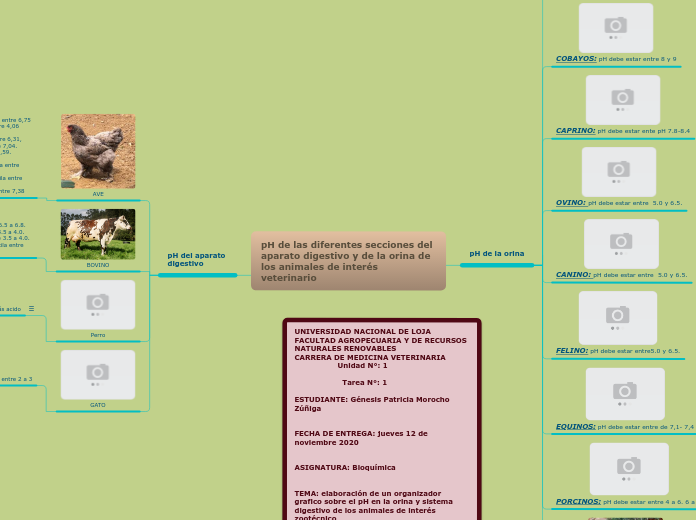Desde la pelvis renal, la orina primero drena en los uréteres y luego en la vejiga, para por último abandonar el cuerpo, a través de la uretra.
TRANSPORTE, ALMACENAMIENTO Y ELIMINACIÓN DE LA ORINA
To name your story, you have to think about the overall message and what you want your audience to understand from the story. Also, make it relevant and easy to remember.
Uretra
The ending of a story is essential. We all know that if the ending is weak, what happened before loses its importance. So make it unpredictable, but fair. A resolved ending answers all the questions and ties up any loose threads from the plot.
Las capas, tamaño y demás, varían dependiendo el sexo.
This is the closure section of the story.
See examples of possible outcomes below:
- all problems have been solved
- it's clear how each one of your characters ends up
- your main character is transformed by the challenge
Hombres
Sus capas son la mucosa profunda y la muscular superficial, La uretra masculina se subdivide en 3 regiones.
Uretra esponjosa
Las glándulas bulbouretrales (de Cowper) desembocan a este nivel y secretan una sustancia alcalina antes de la eyaculación que neutraliza la acidez de la uretra.
Porción más larga, que transcurre a lo largo del pene. Su epitelio es cilíndrico estratificado, excepto cerca del orificio uretral externo que donde se transforma en epitelio pavimentoso estratificado no queratinizado.
Uretra membranosa (intermedia)
Las glándulas que conduce secreciones de moco son las glándulas uretrales (de Littré) durante la excitación, el acto sexual y la eyaculación.
La capa muscular posee fibras musculares esqueléticas circulares de los músculos profundos del periné que ayudan a formar el esfínter uretral externo de la vejiga.
Es la porción más corta y pasa a través de los músculos profundos del periné. Se forma por epitelio cilíndrico estratificado o seudoestratificado.
Uretra prostática
Algunas glándulas vuelcan secreciones, lo cual son los conductos que transportan las secreciones de la próstata y las vesículas seminales y los conductos deferentes, que conducen los espermatozoides hacia la uretra.
Su capa muscular posee fibras musculares lisas circulares superficiales, lo cual ayudan a formar el esfínter uretral interno de la vejiga.
Atraviesa la próstata, consiste en epitelio de transición, que se vuelve cilíndrico estratificado en un sector más distal.
Primero atraviesa la próstata, después los músculos profundos del periné y por último el pene, lo cual su tamaño es de 20 cm de longitud.
Se extiende desde el orificio uretral interno hasta el exterior.
Mujeres
Try answering these questions to come up with a closure:
- Have all the problems been solved?
- Is there a clear picture of what happens with each character in the story?
- Has the challenge transformed your main character?
- How do the characters feel in the end?
La uretra femenina se conforma de las siguientes capas
Se constituye de fibras musculares lisas dispuestas en forma circular.
Capa profunda, posee un epitelio y una lámina propia.
Además, cerca de la vejiga posee epitelio de transición que mantiene la continuidad con el de la vejiga.
La abertura hacia el exterior se denomina orificio uretral externo (el epitelio es pavimentoso estratificado no queratinizado).
Se sitúa por detrás de la sínfisis del pubis, se dirige en sentido oblicuo hacia adelante y mide alrededor de 4 cm de longitud.
Es un conducto pequeño, que se extiende desde el orificio uretral interno en el piso de la vejiga hasta el exterior.
This is the moment when the main character surpasses the last obstacle and finally faces their greatest challenge.
The climax usually follows one of these patterns:
- realization
- resolution
- choice
Type in your answer.
En ambos sexos, constituye la porción terminal del aparato urinario y la vía de pasaje de la orina hacia el exterior, también, en los hombres es la salida del semen.
Vejiga
The middle of the story is where you add layers of complications that will lead to the end. Reveal more about the character's journey. Did their personality go through changes? How did they overcome the challenges? And as you build up the story’s central conflict, make it more personal to that character. Also, from the middle act, you have to lead into the final act.
Reflejo miccional
There wouldn't be any tension and excitement in your story if there weren't any obstacles in your character's way.
La micción se produce cuando se contrae la pared de la vejiga y se relajan los esfínteres. El deseo inconsciente de orinar se inicia cuando se llena la vejiga, lo cual se produce el reflejo miccional.
Los impulsos nerviosos provocan la contracción del músculo detrusor y la relajación del esfínter uretral interno, al mismo tiempo el centro de la micción inhibe las neuronas motoras somáticas.
la presión en su interior aumenta y los receptores de estiramiento transmiten impulsos nerviosos hacia la médula espinal, lo cual se propagan al centro de la micción y en los segmentos S2 y S3 se produce el reflejo miccional.
La micción es la emisión de orina de la vejiga, lo cual son producidas por la combinación de contracciones musculares voluntarias e involuntarias.
A story is nothing more than a character overcoming a series of difficulties to reach the desired goal. Obstacles usually create suspense and conflict. In overcoming obstacles, there is growth: weak becomes strong; hatred turns into love; sadness into happiness; wrong into right; lies into truth; or evil becomes good.
See a few examples below:
- stopping a meteor
- finding a killer
- finding love
Anatomía e histología
Your character(s) need(s) motivation in order to solve the challenge(s).
Paredes de la vejiga
Secondary characters might also have motives that lead them to cross paths with the main character or which might trigger them to help the main character.
También, la serosa se halla en la región superior, lo cual es una capa de peritoneo visceral.
Capa superficial, capa de tejido conectivo areolar.
Túnica muscular o músculo detrusor
Compuesta por tres capas de fibras musculares lisas, la longitudinal interna, la circular media y la longitudinal externa.
Alrededor del orificio uretral, las fibras circulares forman el esfínter uretral interno, y más abajo se encuentra el esfínter uretral externo, compuesto por músculo esquelético.
Capa profunda, compuesta por epitelio de transición y una lámina propia subyacente.
El piso de la vejiga se denomina trígono, cuyos ángulos posteriores contienen dos orificios ureterales. El orificio uretral interno es la desembocadura de la uretra.
Why does your character need to confront this challenge? What does he/she expect to accomplish by solving it?
See a few examples:
- will marry in 3 days
- can fix the mistakes of the past
Características
Each story has a main character and that character usually needs to solve a problem or challenge. The character's challenge is the one that creates tension throughout the story.
Toma forma de pera y asciende a la cavidad abdominal, cuando el volumen de la orina aumenta.
La capacidad de la vejiga oscila en promedio entre 700 y 800 mL.
En los hombres, la vejiga se sitúa delante del recto y en las mujeres anterior a la vagina e inferior al útero.
Type in any other challenges which other characters in the story need to face.
Es un órgano muscular hueco y distensible, situado en la cavidad pelviana, por detrás de la sínfisis del pubis., los repliegues peritoneales mantienen a la vejiga fija.
In most stories, there are 3 challenges. The number 3 is a mystical number symbolizing completeness. Try to come up with interesting challenges with which your character needs to struggle.
See a few examples below:
- turns into a werewolf at night
- is sent back in time
Uréteres
In the beginning of the story (or the exposition), you will need to introduce the setting and characters. You might also want to introduce the main conflict. This part of the story is important because it gives the reader necessary background information and maybe even a first insight into a character’s personality.
Capas de los uréteres
The setting (time & place) of a story can change throughout the plot.
Adventicia
The weather is an important element in your story because it can highly influence the ambiance and the mood of the characters.
Los uréteres son fijados en su posición gracias a la mezcla de adventicia con tejido conectivo circundante.
Decide if you want to include an element of nature in your story. For example, a rainbow can be a very nice choice for a happy ending. The mist in a story can represent mystery and secrets. A thunder can appear in the background at the moment when the 'bad guy' of the story makes its appearance, etc.
Capa superficial, compuesta de capa de tejido conectivo que contiene vasos sanguíneos, vasos linfáticos y nervios destinados a la muscular y la mucosa.
Does your story include catastrophic weather? See a few suggestions below or add your own:
- hurricane, earthquake, storm, etc
Muscular
The time of the story can also change. It can describe the event of a single day or can include an entire year's plot. Anyway, don't forget to mention it.
Su función es la peristalsis.
Capa intermedia, se compuesta por capas longitudinal interna y circular externa de fibras musculares lisas, además la capa muscular del tercio distal de los uréteres poseen una capa externa de fibras musculares longitudinales.
Mucosa
Your story can take place wherever your imagination will take you to.
For example: in an elevator, in an enchanted forest, etc. Don't forget to give details of the environment each time the setting changes, otherwise, the story can be confusing. Also, mention the seasons as each of them has unique weather and events.
Las células caliciformes de la mucosa secretan moco y se encargan de evitar que las células tomen contacto con la orina, lo cual la concentración de solutos y pH pueden variar en relación al citosol de las células.
El epitelio de transición puede distenderse.
Capa más profunda, Compuesta por epitelio de transición, y la lámina propia subyacente de tejido conectivo areolar con presencia de colágeno, fibras elásticas y tejido linfático.
Las uréteres al no tener una válvula anatómica, la vejiga al llenarse de orina, la presión en su interior comprime los orificios oblicuos de los uréteres e impide el reflujo de orina.
Las contracciones peristálticas de las paredes musculares de los uréteres, la presión hidrostática y la gravedad, e impulsan la orina hacia la vejiga.
Characters are essential to a good story. Usually, the protagonist(s) is/are the most affected by the plot. Introduce a character by focusing on their actions, interests, and occupation, as the physical appearance doesn't make a difference in most cases.
Adoptan una dirección transversal y giran en sentido medial, a través de la pared vesical posterior.
Fluctúa entre 1 y 10 mm a lo largo de su trayectoria entre la pelvis renal y la vejiga.
Los uréteres miden entre 25 y 30 cm de largo, sus paredes son gruesas y su diámetro es pequeño.
Type in the name of your character.










